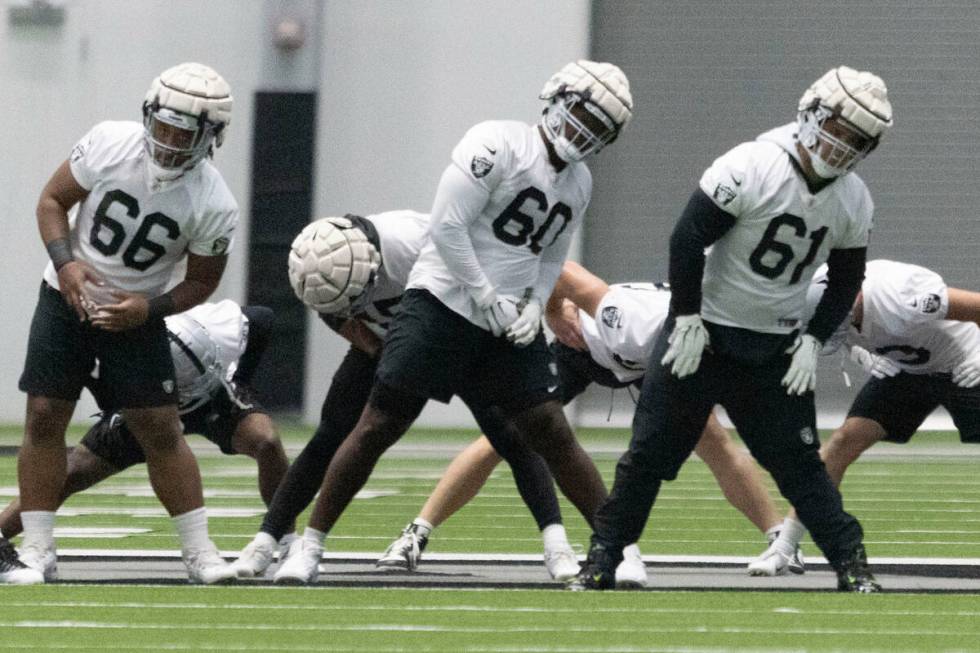What are those funny-looking soft caps on NFL helmets during camp?

Raiders defensive end Tashawn Bower noticed the difference as he was getting suited up for practice Wednesday.
Gone were the funny-looking soft Guardian Caps that had been required for many players throughout the first few weeks of training camp.
“It’s a lot easier to buckle and unbuckle your chin strap” without the shells that strap around the helmet, the sixth-year pro said partly in jest.
While the extra padding might have created a minor inconvenience in preparation, the intent of aiding long-term brain health and safety seems a worthy endeavor.
The caps operate similar to an airbag in a collision and are believed to reduce the severity of impact by at least 10 percent. When both players don the cap, studies suggest severity is reduced by at least 20 percent.
Certain NFL players were required to wear the caps through the second preseason game, namely the ones involved in the most collisions during practices.
Offensive and defensive linemen, along with tight ends and linebackers were among the groups mandated to use the caps. Others had the option to wear them.
“All the science says that it’s a good thing for us to have and for us to wear, limiting the residual effects to the brain and those types of things,” Raiders coach Josh McDaniels said. “Our players have been great in terms of doing it the way the league wants us to do it, and there’s nothing more important than the health of the team and the safety of the players.”
Guardian won a grant as the winner of the NFL’s first HeadHealth TECH Challenge in 2017 for developing the caps that weigh less than a pound. Several teams participated in a 2020 program that allowed data to be collected, which showed a “statistically significant” improvement in limiting the severity of impact over helmets alone.
The caps were mandated over the first few weeks of camp based on research suggesting that’s when players see the highest concentration of helmet contact. The thinking was that reducing the severity at that time could help mitigate some of the cumulative effects of repeated head trauma.
It’s just the next step in a lengthy process for the NFL to help better understand and limit brain injury as much as possible.
“It’s important to recognize we’re not looking at that as ‘Put a Guardian Cap on and go about head contact as if nothing were different,’” NFL chief medical officer Dr. Allen Sills said in a conference call.
The players have received that message, according to Bower.
“We’re still trying to keep our head out of it and play safe,” he said. “There’s a little bit of difference, but it’s not too much where it’s changing the way you play.”
The league, which agreed to pay nearly $1 billion to settle a class action suit brought by former players who had suffered from medical issues as a result of brain trauma, insists it will continue to explore ways to make the game safer.
“Our aim is to be very clear; we want to reduce the amount, the intensity and the timing of head contact,” Sills said. “We recognize concussion as being on one end of the spectrum of brain injury. But we want to reduce avoidable head contact. We’ve been very public about that goal. The Guardian Cap is part of that effort.”
Many high school players and at least 100 colleges have used the Guardian Caps in some fashion in the past few years. The detachable and affordable (typically less than $60) nature of the equipment is part of its appeal for the lower levels of the sport. The caps appear to be even more effective for those players, too.
Because those players are smaller and slower, impact reduction could be as high as 33 percent, according to the manufacturer.
Their use in the NFL is likely to become more common as long as the data suggests they are working.
McDaniels believes his players adjusted as camp progressed.
“Our guys needed to get acclimated to it, but generally speaking, I think they’ve had a great attitude about it, and we haven’t had any issues,” he said.
Contact Adam Hill at ahill@reviewjournal.com. Follow @AdamHillLVRJ on Twitter.